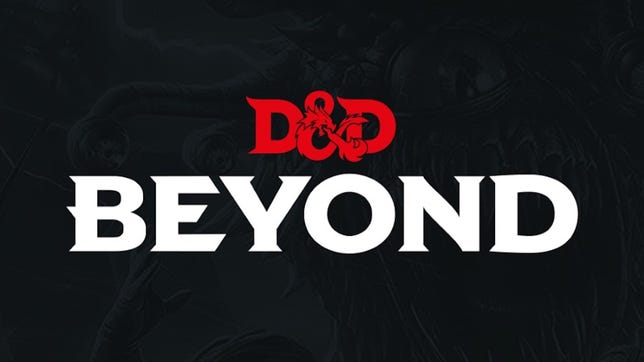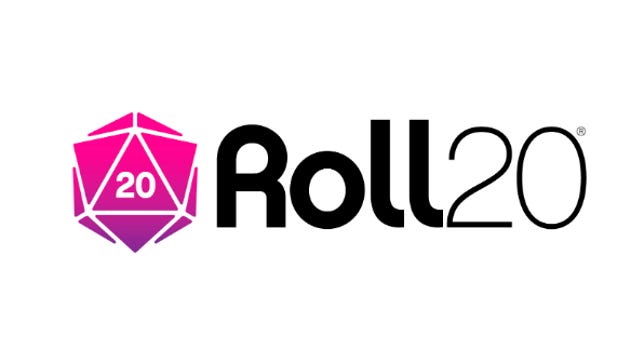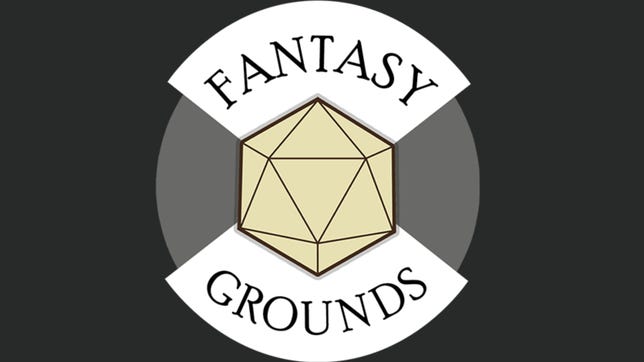Technologies
Best Online D&D Tools
If you want to play D&D online, these services will help you ditch the pen and paper.

Dungeons & Dragons has been around for decades, but we’re in the middle of a D&D renaissance that’s breathing new life and new players into the world’s best-known tabletop RPG. There’s a new movie coming out in April, and Amazon studios just inked a major deal in January to bring more Critical Role adventures, such as Legend of Vox Machina, to Prime Video.
Critical Role, along with similar tabletop RPG shows like Dimension 20, have introduced more people to the game, and online video chat apps have made it easier to pull a D&D group together. There are plenty of D&D tools that allow you to play the game online, but it can be a chore to go through each one and understand what it offers, what it doesn’t and how easy it is to use.
We looked at three of the most popular online D&D services — D&D Beyond, Roll20 and Fantasy Grounds — testing each one on a variety of basics:
- How easy was it to build a character sheet?
- How well did the service guide new players through the process?
- How effective and easy to use was the map function, if it had one?
- What does the service add to the D&D experience, and what does it limit?
Each service has different strengths and drawbacks, and we looked at them through the eyes of both experienced and inexperienced players to see how they compared.
Read more: D&D Dragonlance Reboot Is More Than Nostalgia, Less Than It Could Be
If you’re new to the game and mainly interested in trying out a tabletop RPG, D&D Beyond makes it easy to get a character sheet and campaign up and running. If you want everything you need in one place with relatively little fuss, check out Roll20. And for D&D power gamers, Fantasy Grounds allows you amazing levels of automation and control once you invest the time to learn it.
So whether your play group has scattered to different cities, or maybe it’s just easier for everyone to jump on a Zoom call once a week (or month), here are our picks for the best D&D tools to use online.
Best online D&D tools
Fandom
Likes
- Extremely easy to pick up and get started
- Design is simple and easy to navigate
- Impressive features for free accounts
Dislikes
- No interactive map feature
- Limited to Dungeons & Dragons
D&D Beyond was already a popular service long before it was bought by Hasbro, which also owns D&D publisher Wizards of the Coast. It’s a straightforward tool that makes creating characters fun by simplifying most of the process. For people who are new to the game, there’s no easier way to get started.
D&D Beyond’s online character creator is free, allowing you to try different character builds without having to spend a dime. Free accounts only have access to the basic rules (including races and classes), and are limited to six characters, but that should be plenty for most new players.
If you want to invest in your D&D games, you can buy digital versions of official D&D books in a few different flavors. D&D Beyond offers sourcebooks, like Tasha’s Cauldron of Everything and Explorer’s Guide to Wildemount, which give you new settings and character options. It also offers adventure books, like Curse of Strahd and Candlekeep Mysteries, which DMs can use to run campaigns. Both types of books are typically $30 apiece, though some smaller packages cost less.
You can also buy a subscription at either the Hero tier ($3 per month) or the Master tier ($6 per month) to unlock extra features. The Hero tier allows you to make as many character sheets as you want and also opens up access to test new D&D Beyond tools. The Master tier adds the option to share content from any of your purchased books with the rest of the players in your campaign.
A Hero tier subscription isn’t great value unless you play in a lot of D&D groups (more than six). The real value of a subscription is sharing content with the Master Tier — that $6 per month allows you to share features from sourcebooks and adventure books with your entire group, rather than requiring everyone to buy their own copy. A DM with a Master-tier subscription can spend $6 per month and share purchased content with the rest of the group even if they have free accounts.
The primary drawback of D&D Beyond is that it focuses on character sheets, not other elements of a D&D table. Most notably, it lacks meaningful map features to help your group visualize combat and exploration. If your gaming sessions focus on those elements, you’ll need to supplement with your own maps or the map tools of our other top picks. Both Roll20 and Fantasy Grounds offer useful map features.
But of the tools we tested, D&D Beyond was far and away the simplest to get started with. It walks you through each step of the process — choosing a race and class for your character, constructing your build as you level your character, and navigating the rest of the starting options. For options and systems that are a little confusing, you’ll have the ability to read through more detailed explanations in popups. If you’re trying D&D for the first time or you just want an easy way to manage your character sheet, D&D Beyond should be your first stop.
Roll20
Likes
- Character sheets, maps and dice in one tool
- Interactive maps that are easy to learn
- Includes video chat
Dislikes
- Overall design is a little messy
- DMs have to give other players character sheets to fill out
If you’re looking for a one-stop shop for all your D&D gaming, we recommend Roll20 for its versatility. Roll20 offers practically everything you could ask for in a virtual D&D tool: You’ll be able to make characters and play out epic battles on an interactive map, all without even needing an external service for video or voice chat. The tradeoff is a little more time spent figuring out how features work.
Everything in Roll20 is run through its Games feature, and your DM will need to create a game for everyone to get started. The DM can then invite players to join through emailed invitations or simple copy-and-paste links. Once everyone’s in, the DM can create blank character sheets and assign those characters out to players for them to customize.
Players can create their characters using Roll20’s Charactermancer tool, which walks them step by step through the character creation process, similar to D&D Beyond. You’ll see snippets from the core rules to help explain any new or confusing features. At the end of the process, your character sheet will be set up and ready to go. You also have the option of pulling up a blank character sheet and filling it out directly, which may be appealing for more experienced players, but the Charactermancer is generally the simpler option.
The Roll20 character sheets don’t feel quite as stylish or easy to navigate as D&D Beyond’s, but Roll20 makes up for it with a variety of other features you won’t find on D&D Beyond. The biggest one is interactive maps. DMs can create maps for their campaigns, allowing your group to traverse dungeons and engage in battles more tactically. DMs can use fog of war to limit map vision to what players can actually see, and players can move tokens representing their characters around the map, just like you would at a physical table.
Like the other online D&D tools we reviewed, Roll20 has a marketplace where you can buy digital versions of sourcebooks and adventure books, which unlock new features for your character sheets and maps. The costs will generally match what you see in D&D Beyond and Fantasy Grounds, so don’t worry too much about bargain hunting. The biggest difference is that Roll20 and Fantasy Grounds also offer books from other tabletop RPGs like Pathfinder and Call of Cthulhu, whereas D&D Beyond is strictly based on Dungeons & Dragons.
Roll20 offers free accounts and two subscription options that unlock additional features. Like D&D Beyond, you can pay $6 per month (discounted to $50 annually if you pay upfront) to share purchased content with other players in their game. That subscription also unlocks features like dynamic lighting and the ability to transfer characters between games. For $10 per month ($100 annually if you pay upfront), you can also copy other materials between games, unlock additional customization options and get a monthly reward.
Roll20 is a good middle ground between the other tools we tested. It’s not quite as slick as D&D Beyond, but it offers more features like interactive maps, and it works with other game systems. It’s not quite as robust as Fantasy Grounds, but it’s generally easier to pick up and use. If you want a tool that lets you run a whole tabletop RPG virtually, and you’re less interested in learning how to customize or automate your gameplay, try Roll20.
SmiteWorks
Likes
- Takes care of rules so you can focus on play
- Enables homebrew content
- One-time purchase option
Dislikes
- Steep learning curve just to get started
- Less beginner-friendly than other services
Fantasy Grounds is a powerful but complex tool that requires a lot of work upfront to be able to get the most out of the service. It allows the most customization of the tools we reviewed, but it also took the longest to get started. If you want a tool that’s easy to pick up and get started with, you’re better off with D&D Beyond or Roll20, but if you want ultimate control over your session and want something that will handle most of the rules for you, Fantasy Grounds is the most complete option we tested.
Before we get into the good parts of Fantasy Grounds, it’s important to understand the barrier to entry. Fantasy Grounds is not intuitive or beginner-friendly. It does offer video guides to help you get started, but you’ll need to spend about an hour just watching those to get a handle on the barest basics. Even after watching the tutorial, it was sometimes a struggle to operate the system’s mechanics. It also seems designed for a desktop setup — we had a hard time navigating the very small menu options on a laptop trackpad, which wasn’t a problem with the other services. Even with guides, Fantasy Grounds was sometimes frustrating to learn how to use.
The flip side of that coin is that Fantasy Grounds is astoundingly robust. It knows that some D&D players want to control every detail of their sessions. Just like the other tools we reviewed, Fantasy Grounds lets you build a digital character sheet. And like Roll20, it lets you use digital maps for combat and exploration. But Fantasy Grounds gives you the tools to customize your entire campaign in more ways than the other tools we tested.
Perhaps more importantly, Fantasy Grounds understands the rules of a system and will automatically apply them. If a player clicks an enemy on the map and chooses the weapon they want to attack with, Fantasy Grounds will roll a d20, add the appropriate attack roll modifier, then compare that to the enemy’s armor class and tell you whether the attack hits or misses. Other online D&D tools will do individual pieces of that (like adding the appropriate modifier to your attack roll), but won’t compare that to the enemy’s AC and translate it into a hit or miss. Once you’re up and running, Fantasy Grounds allows your play group to spend less time doing math or looking up rules and more time just playing the game.
Fantasy Grounds uses similar subscription pricing to the other services. Players can create free accounts with limited functionality. Or you can pay $4 per month for a standard subscription that lets you play with other people who have a Fantasy Grounds subscription. You also have the option of an ultimate subscription for $10 per month, which allows you to host a campaign for players on free accounts and share content with them. That makes it a little more expensive than other services for DMs who want to share content with players on free accounts. Uniquely, Fantasy Grounds also offers one-time payment options: $39 for a standard license and $149 for an ultimate license. Players on standard or ultimate subscriptions or licenses will be able to purchase sourcebooks for their campaigns, and just like Roll20, Fantasy Grounds allows you to play multiple tabletop RPG systems in addition to D&D.
Fantasy Grounds is best suited for detail-oriented dungeon masters who want to be able to fine-tune every aspect of their campaign and their players’ experience. If you like to create your own campaign (aka «homebrew») or let your players run customized classes, you’ll have an easier time doing that in Fantasy Grounds than Roll20. D&D Beyond is also pretty capable with homebrew content, but again, it doesn’t offer a maps feature.
Online D&D FAQs
What do I need to play D&D online?
You can play Dungeons & Dragons online without investing in tools or game services. All you really need are a group of people to play with, an internet connection and a copy of the basic rules, which are available for free from Wizards of the Coast. Those three things are enough for you to run a basic session. The appeal of online D&D tools is the way they help you organize and automate the game. For example, D&D Beyond’s character sheets will automatically tally your proficiency bonus, your ability modifiers and your items’ stats and will calculate everything for you whenever you need to roll for something. Without those tools, you have to manually keep track of bonuses and add them to the appropriate rolls. D&D Beyond lets you sign up for a free account and start making character sheets if you want to try out the game without investing money into it. Roll20 and Fantasy grounds also offer free accounts, but it’s not as easy to start making characters with those accounts.
What are the best D&D map makers?
There are dozens of online tools to help you build a map for your Dungeons & Dragons campaign. However, of the services we tested, only Roll20 and Fantasy Grounds feature interactive maps. Both allow you to use maps from official Dungeons & Dragons adventures or make your own custom maps. You’ll be able to place player characters and enemies across the map to let your players visualize exploration and combat. Roll20’s map system was easier to use, but Fantasy Grounds had more features.
Which D&D service is best?
We tested three Dungeons & Dragons tools and found that each one had its own particular strengths and drawbacks. Roll20 might be the best option if you want a single solution for all your online RPG adventures. D&D Beyond has excellent digital character sheets and resources for beginners. Fantasy Grounds is the most powerful tool overall, but requires substantially more time to learn and set up than the other two. You can also mix and match — making character sheets in D&D Beyond, but using Roll20 for any combat encounters, for example. We recommend creating free accounts with different services to find out what you like or dislike and choose what works best for you.
Technologies
Xbox Set to Bring Resident Evil, Star Wars and More to Xbox Game Pass
Subscribers can play several other games, including the original Final Fantasy in all its 2D glory, on Game Pass in January.
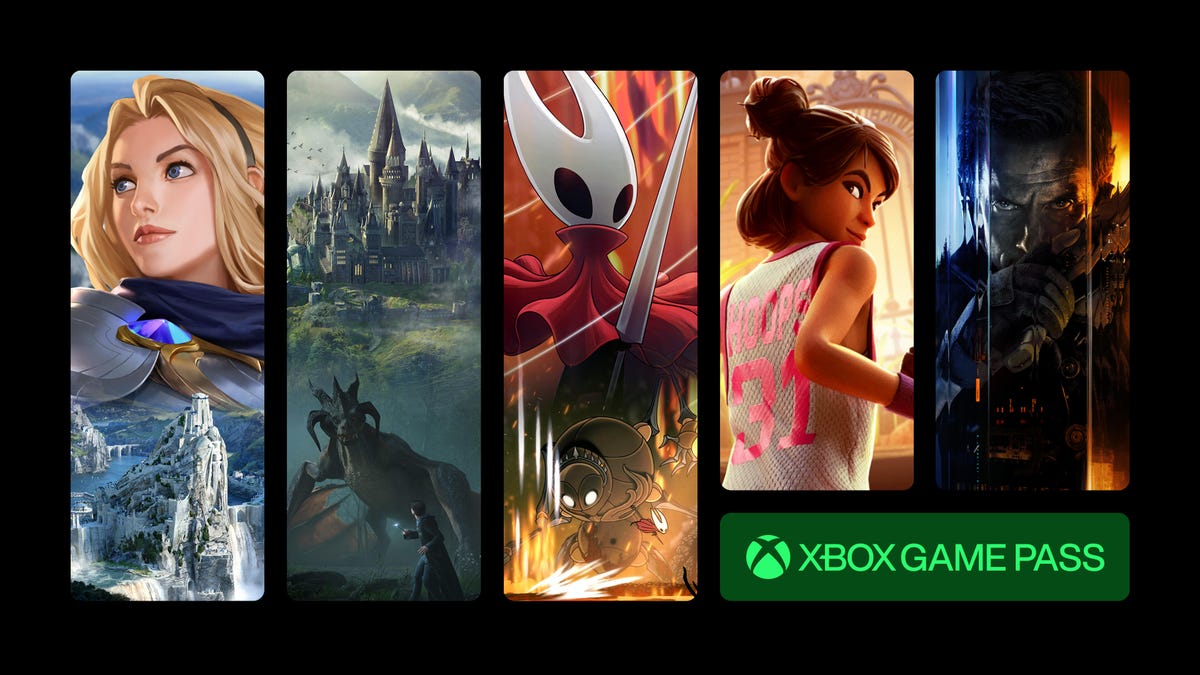
Resident Evil Requiem, the ninth game in the main Resident Evil series, is set to be released on Feb. 26. Xbox Game Pass subscribers can prepare for Requiem by playing Resident Evil Village, the most recent entry in the series, starting on Jan. 20.
Xbox Game Pass offers hundreds of games you can play on your Xbox Series X, Xbox Series S, Xbox One, Amazon Fire TV, smart TV and PC or mobile device, with prices starting at $10 a month. While all Game Pass tiers offer you a library of games, Game Pass Ultimate ($30 a month) gives you access to the most games, as well as Day 1 games, like Call of Duty: Black Ops 7, added monthly.
Here are all the games subscribers can play on Game Pass soon. You can also check out other games the company added to the service in December, including Marvel Cosmic Invasion.
Note: «Handheld» means a game is optimized for handheld play.
Don’t miss any of our unbiased tech content and lab-based reviews. Add CNET as a preferred Google source.
Brews & Bastards (cloud, PC and Xbox Series X/S)
Game Pass Ultimate, Game Pass Premium and PC Game Pass subscribers can play now.
What’s a hero gotta do to get a drink around here? Choose an inebriated hero to travel deep under a tavern in search of the stolen Brew Stone. You’ll explore tavern-themed dungeons and use bar-inspired weapons, like high-caliber champagne bottles, to blast through drunken demons and other boozy monsters. And if you’ve ever called one of your exes a drunken demon, maybe this game will be a little cathartic for you.
Little Nightmares Enhanced Edition (cloud, handheld, PC and Xbox Series X/S)
Game Pass Ultimate, Game Pass Premium and PC Game Pass subscribers can play now.
Little Nightmares is back in high-quality 4K and 60 frames per second in this enhanced edition of the dark tale. You play as a lone child trapped in a massive world inhabited by monstrous versions of adults called the Maw. All you can do is run from these creatures, but you’ll also have to sneak and hide to throw them off your trail if you want to survive.
Atomfall (cloud, console, handheld and PC)
New to Game Pass Premium. Previously on Game Pass Ultimate and PC Game Pass.
The Windscale fire was the worst nuclear disaster in the UK’s history, and it’s estimated that it caused between 100 and 240 cancer-related deaths. Atomfall asks, «What if Windscale was similar in magnitude to the disaster at Chornobyl?»
This game takes place five years after a far more devastating Windscale disaster. You’ll encounter gangs of bandits, cults and rogue government agencies throughout the quarantine zone in the beautiful Lake District, in northern England. It’s up to you whether you avoid conflict or charge into the heat of battle, but resources are scarce, so maybe don’t go in guns blazing every chance you get.
Lost in Random: The Eternal Die (cloud, Xbox Series X/S, handheld and PC)
New to Game Pass Premium. Previously on Game Pass Ultimate and PC Game Pass.
You’re the once-great ruler of Random, Queen Aleksandra, and you’re on a mission of vengeance and redemption in this fast-paced rogue-like game. You’ll fight monsters and beasts with four unique weapons, plus powerful card-based abilities and relics. But death isn’t final here, so if you fall, you’ll return to Sanctuary to rearm, upgrade and prepare for your next run.
Rematch (cloud, PC and Xbox Series X/S)
New to Game Pass Premium. Previously on Game Pass Ultimate and PC Game Pass.
Tackle, dribble and score in this team-based football game (or soccer, depending on your locale). This game was designed for 5v5 online multiplayer matches where players control a single athlete. That means you’ll have to coordinate and plan with the rest of your co-op teammates if you want to win. And with no player stats to give one person an advantage over another, coordination is the key to success.
Warhammer 40,000: Space Marine – Master Crafted Edition (cloud, PC and Xbox Series X/S)
New to Game Pass Premium. Previously on Game Pass Ultimate and PC Game Pass.
You are Capt. Demetrian Titus, an Ultramarine in the Imperium of Man tens of thousands of years from now, and it’s up to you and your squad to help reclaim the Forge World Graia from an Ork horde. Originally released in 2011, this third-person shooter has been remastered for modern consoles with enhanced character models, a modernized control scheme and more. So grab your chainsword and bolter and get ready to fight. For the Emperor!
Final Fantasy (cloud, Xbox Series X/S and PC)
Game Pass Ultimate, Game Pass Premium and PC Game Pass subscribers can play on Jan. 8.
This is the game that started it all. Join the Warriors of Light on a journey to restore power to the Crystals and save their home world. The remastered version of this game introduces enhanced gameplay features, including auto-battle and more, to your screen.
Star Wars Outlaws (cloud, PC and Xbox Series X/S)
Game Pass Ultimate and PC Game Pass subscribers can play on Jan. 13.
Luke Skywalker and the Jedis are cool and all, but who didn’t want to be a cool smuggler like Han Solo? This open-world Star Wars game lets you become just that. You play as Kay Vess, a scoundrel looking for freedom and a new life. You’ll fight, steal and outsmart crime syndicates from around the galaxy. But the Empire is out there, too, so watch your back.
My Little Pony: A Zephyr Heights Mystery (cloud, console, handheld and PC)
Game Pass Ultimate, Game Pass Premium and PC Game Pass subscribers can play on Jan. 15.
Go on an adventure with Sunny, Hitch, Izzy, Pipp, Zipp and Misty as you try to solve a mystery together. Strange music is turning the world upside down, and it’s up to you and your friends to use your powers to put a stop to the music.
Resident Evil Village (cloud, console and PC)
Game Pass Ultimate, Game Pass Premium, PC Game Pass subscribers can play on Jan. 20.
The latest entry in the mainline Resident Evil series puts you back in the shoes of Ethan Winters as he ventures into a haunting European village in search of his abducted daughter. You’ll fight lycans, vampires and other monstrous creatures as you try to uncover why your daughter was taken and your wife was murdered.
MIO: Memories in Orbit (cloud, handheld, PC and Xbox Series X/S)
Game Pass Ultimate, PC Game Pass subscribers can play on Jan. 20.
Get ready to explore a treacherous ship in this sci-fi metroidvania game. You play as Mio, a nimble android who wakes up in the Vessel, a spaceship drifting aimlessly through the stars. The ship’s machines have gone rogue, and vegetation has taken over parts of the Vessel. It’s up to you to figure out what happened to the Vessel and the ship’s purpose.
Games leaving Xbox Game Pass on Jan. 15
While Microsoft is bringing those games to different Game Pass tiers this month, the company is also removing these games from the service on Jan. 15. So, you still have some time to complete your campaign or any sidequests before you have to purchase these games separately.
For more on Xbox, discover other games available on Game Pass now and check out our hands-on review of the gaming service. You can also learn about recent changes to the Game Pass service.
Technologies
We’ve Found the Coolest, Most Futuristic Tech at CES 2026. And the Show Just Started
We’ve already had a day to trawl for our favorite cutting-edge technology. Neat stuff abounds!

We have people all over the show floor and beyond at CES, searching for the most interesting, innovative and cutting-edge tech available. A ton of useful new information is also available, which you can find on our CES 2026 live blog and in our CES hub.
The show floor opened Tuesday, and we had a lot of preview time beforehand to gawk at some CES staples, such as robots, electronic toys, phones and more. I’ll be back here to top off our fun finds regularly throughout the show.
Technologies
Grab This Tariff-Busting Xbox Series X Deal and Save $44 While You Can
You can bag a 1TB Xbox Series X for just $606, but act fast, since we don’t know how long this deal will last.
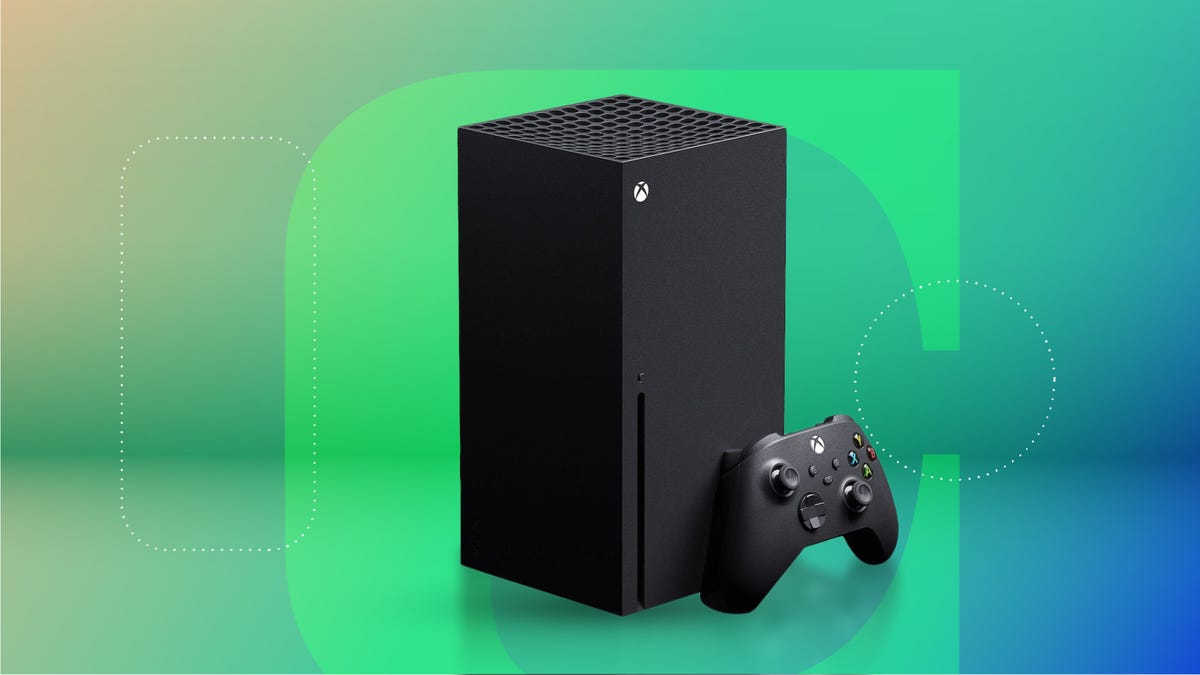
Ever since tariffs and other economic uncertainty led to Xbox price increases in late 2025, things have gotten expensive. A 1TB Xbox Series X now sells for $50 more than it used to, and there is little sign of these prices improving anytime soon.
Thankfully, every so often, a deal pops up that helps make things a little more affordable like this Walmart discount that slashes that same Series X to just $606. The catch? Well, there isn’t one. But we don’t expect this deal to last for long, so make sure to get your order in soon before it leaves for good.
The Xbox Series X has been around for a while now, so there are no surprises with what you get in the box. The Series X comes with a 1TB SSD for storage, and you get a controller in the box. This version also has a disc drive for installing games and watching Blu-ray movies, too.
Hey, did you know? CNET Deals texts are free, easy and save you money.
You can look forward to watching 4K content and playing 4K games, as well as enjoying audio options such as Dolby Digital, Dolby TrueHD and DTS. All of that makes this a capable machine, whether you want to watch content or play games.
CHEAP GAMING LAPTOP DEALS OF THE WEEK
Why this deal matters
It’s unlikely that Xbox prices will get any cheaper anytime soon, so deals like this are the best we can expect for a while now. If you’re in the market for an Xbox and have the $604 to spare, then this is probably the time to place your order before it’s too late.
-

 Technologies3 года ago
Technologies3 года agoTech Companies Need to Be Held Accountable for Security, Experts Say
-

 Technologies3 года ago
Technologies3 года agoBest Handheld Game Console in 2023
-

 Technologies3 года ago
Technologies3 года agoTighten Up Your VR Game With the Best Head Straps for Quest 2
-

 Technologies4 года ago
Technologies4 года agoBlack Friday 2021: The best deals on TVs, headphones, kitchenware, and more
-

 Technologies4 года ago
Technologies4 года agoVerum, Wickr and Threema: next generation secured messengers
-

 Technologies4 года ago
Technologies4 года agoGoogle to require vaccinations as Silicon Valley rethinks return-to-office policies
-

 Technologies4 года ago
Technologies4 года agoOlivia Harlan Dekker for Verum Messenger
-

 Technologies4 года ago
Technologies4 года agoiPhone 13 event: How to watch Apple’s big announcement tomorrow

